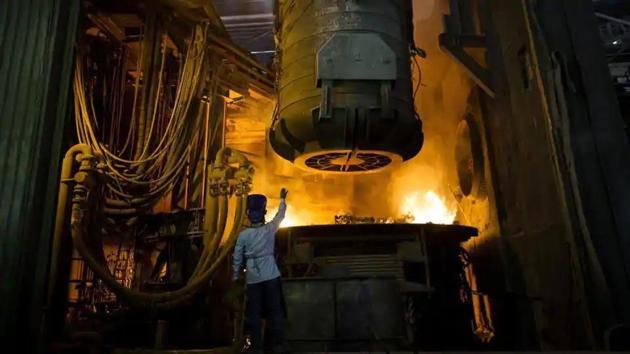April factory output contracts by 55.5%
The use-based categories of factory output shows the lockdown had varying impact on sectors.
India’s factory output contracted by a record 55.5% in April as industries remained closed in the first month of the nationwide lockdown. However, the National Statistical Office said the data is not comparable with previous months and that figures will be revised later.

“In view of the preventive measures and announcement of nationwide lockdown by the government to contain spread of Covid-19 pandemic, majority of the industrial sector establishments were not operating from the end of March. This has had an impact on the items being produced by the establishments during the month of April where a number of responding units have reported nil production. Consequently, it is not appropriate to compare the IIP (Index of Industrial Production) of April 2020 with earlier months, and users may like to observe the changes in IIP in the following months. These quick estimates will undergo revision in subsequent releases as per the revision policy of IIP,” it said.
The statistics department did not release retail inflation data but said food inflation in May slowed to 9.69% from 10.5% in the previous month. The increase in petrol and diesel prices for the sixth consecutive day on Friday is expected to push up retail inflation in June. However, as the Reserve Bank of India is firmly focusing on reviving economic activity, most analysts expect it to further cut the policy rate.
Data released earlier showed the manufacturing Purchasing Managers’ Index (PMI) declined to a record low of 27.4 in April while the core sector contracted by 38%, supporting the latest factory output data. During April, manufacturing production contracted 64.3% while mining and electricity output shrank by 27.4% and 22.6%, respectively.
The use-based categories of factory output shows the lockdown had varying impact on sectors. The worst-affected categories in April were consumer durables, capital goods and infrastructure/construction goods, while consumer non-durables, which include several essential items, and primary goods saw a relatively moderate fall.
The extent of contraction in factory output was not as bad as she feared, said Aditi Nayar, principal economist at ICRA Ltd. “The available lead indicators point to a modest recovery in May 2020 in some of the sectors that were acutely affected by the lockdown, such as rail freight, GST e-way bills, and fuel and electricity consumption. Accordingly, we expect some improvement in the level of industrial output in May relative to the previous month,” she added.
“The continuation of the lockdown in May, albeit with some relaxations, means negative growth in industrial production will continue but will be marginally better than April,”said Madan Sabnavis, chief economist at Care Ratings.






